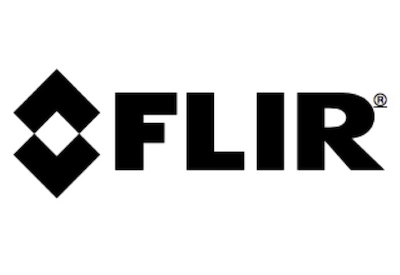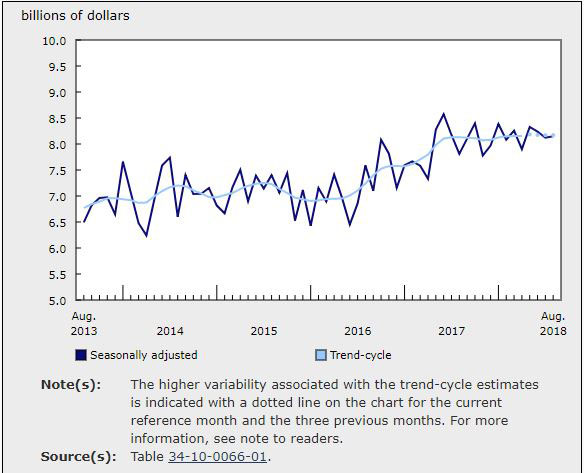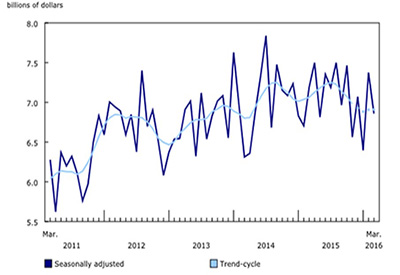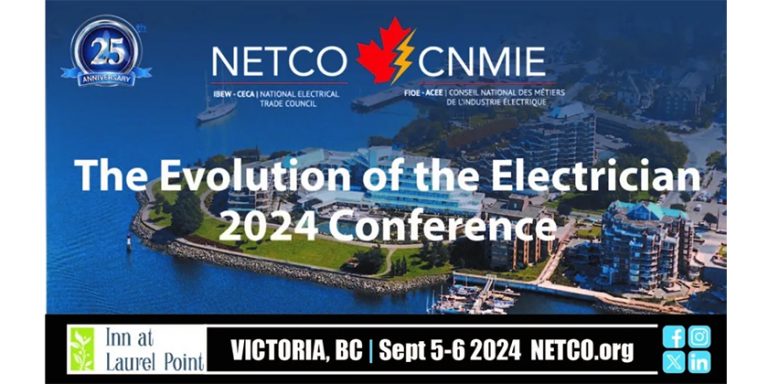Guide to the Canadian Electrical Code, Part 1 , 25th Edition– A Road Map: Section 60
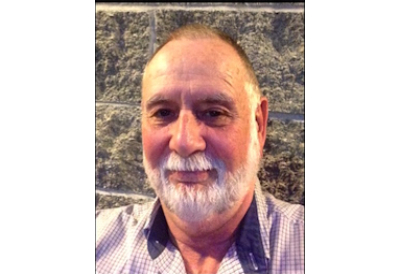
April 7, 2022
The Code is a comprehensive document. Sometimes it can seem quite daunting to find the information you need quickly. This series of articles provides a guide to help users find their way through this critical document. It is not the intent of these articles to replace the notes in Appendix B or the explanations of individual requirements contained in the CEC Handbook**but hopefully provide help to navigate the Code.
Section 60 — Electrical Communications Systems.
60-000 Scope states that this is a supplementary or amendatory section of the Code and includes additional and specific requirements for communication systems such as telephone, telegraph, data communication intercommunication, paging, and wired music systems. The design of electrical communication systems is primarily to carry
information or signals in the form of audio, video, or data. They can also transmit signals for supervision and control. (Note that if the circuit only delivers an off/on signal, it falls under Section 16 Class 1 and Class 2 Circuits). Appendix B and the CE Code Handbook provide additional information.
This Section does not cover:
- alarm systems such as fire, smoke, and intrusion alarms;
- radio and television broadcast communication equipment,
- closed-circuit television systems, and
- community antenna television systems (covered in Section 54).
The circuits for communication systems have different electrical characteristics and present electrical hazards different from those associated with lighting, power, grounding, bonding, and Class 1 circuits. Generally, communication circuits operate within the line-to-ground current and voltage limitations established for Class 2 circuits, as described in Rule 16-200.
General
Rules 60-100 to 60-110 contain a Special Terminology definition of Exposed Plant. They also provide requirements for
- The use of approved equipment as per Rule 2-024, if connected to exposed plant, a telecommunications network, or if required by other specific rules of Section 60.
- A communication building entrance assembly for communication cables for radio and television circuits, remote control circuits, and fire alarm circuits or parts provided suitable protection at the interface connection point.
- Installation in hazardous locations to follow Sections 18, 20 or 24.
- Exemption from regulatory inspection of circuits employed by an electric or communication utility in its function as a utility, except for the junction of the transformer or other current-limiting device of the circuit supplying power to the communications circuit; and
- Use of approved transformers that supply current to a communication circuit.
Protection
Rule 60-200 requires that approved communication system primary protectors, except where no portion of the circuit is considered exposed plant, must be installed:
- in each exposed communication circuit,
- immediately adjacent the structure or building served,
- as close as practicable to the point where the conductors enter or attach, and
- not in a hazardous location defined in Sections 18, 20, and 24, nor the immediate vicinity of flammable or explosive materials.
Rule 60-202 requires the primary protector to connect between each line conductor and ground and may be fuseless when on circuits
- that enter a building in a cable with a grounded metal sheath or shield, provided that the conductors in the cable safely fuse at currents less than the ampacity of the primary protector and the primary protector grounding conductor,
- served by insulated conductors extending to a building from a grounded metal-sheathed or shielded cable, provided that the conductors in the cable safely fuse at currents less than the ampacity of the primary protector, the associated insulated conductors, and the primary protector grounding conductor,
- served by insulated conductors, extending to a building from other than grounded metal-sheathed or shielded cable, provided that the primary protector grounding conductor is grounded in conformance with Rule 60-704; and the connections of the insulated conductors extending from the building to the exposed plant, or the conductors of the exposed plant, safely fuse at currents less than the ampacity of the primary protector, the associated insulated conductors, and the primary protector grounding conductor, or
- in a cable with a grounded metal sheath or shield subject to lightning strikes but are otherwise not exposed to the plant.
Where the conditions of the above requirements are not met, primary protectors must have a fuse connected in series in each line conductor.
You must locate primary protectors with exposed live parts in a suitable room or similar area as required by Rule 2-202, separate from electrical light or power installations. Where it is necessary to place them in a joint-use room, provide and maintain a minimum separation of 900 mm from electrical equipment requiring adjustment and maintenance.
Inside Conductors
Rules 60-300 to 60-334 outline the requirements for installing communication conductors in buildings. The specifications are:
- Install raceways as per Section 12 Wiring methods and Section 10 Grounding and bonding.
- Select conductors as per Rule 4-008(1) Insulated conductors.
- Bond to ground the outer metal covering of wire and cable.
- There must be a minimum separation from other conductors depending on voltage level, installation in metal raceway, metal sheathed or armoured cable, hard-usage cord flexible cable, or non-metal raceway barrier.
- There are additional requirements where bare light or power conductors are present.
- If approved explicitly for this purpose, data processing system interconnection cables may contain power and communication circuits.
- Do not place conductors in any outlet box, junction box, raceway, or similar fitting or compartment that contains conductors of electric light, power or Class 1 circuits (as defined in Rule 16-002), unless
- separated from the other conductors by a suitable partition;
- the power conductors solely supply power to the communication system or remote-control equipment.
Note that no such communication conductors may have green-coloured insulation outside a cable sheath or jacket.
- Conductors in a building may not be placed in a shaft with the conductors of an electric light or power system unless the conductors of all systems are insulated and are separated by at least 50 mm or encased in non-combustible tubing.
- Conductors extending through a fire separation must be installed per Rule 2-128 Fire Spread.
- Installing conductors in hoistways requires special permission from the inspection authority, and they must be enclosed in a continuous metal raceway, except for travelling cables. In addition, Pullboxes must be located outside the hoistway.
- Conductors may only be installed in ducts, or plenum chambers per Rules 2-130 Flame spread requirements for electrical wiring and cables and 12-010 Wiring in ducts and plenum chambers.
- Conductors may be installed under a non-combustible raised floor, without additional mechanical protection, provided that a minimum separation of 50 mm from power supply wiring is maintained. Where the space under the raised floor is an air plenum, the conductors must only serve the equipment located above the raised floor.
- Conductors not terminated on a device must be capped or taped.
Rules 60-324 to 60-334 apply to communication flat cable type (CFC) systems and specify the requirements for:
- Where CFC system wiring may and may not be installed,
- Protective coverings and cross-over and under requirements as per Rule 12-820,
- Crossings,
- Stacking of CFC, and
- Shielding and bonding to ground.
Equipment
Rules 60-400 to 60-408 require that communication equipment:
- Installed in bathrooms and areas adjacent to pools be installed per Rule 68-070 permanently attached to the wall (no jacks) and located so no part can be reached from the bath or shower except by a cord with an insulating link.
- Not be placed in ducts, plenums, or hollow spaces used to transport environmental air, nor in suspended ceiling areas, except for non-protective type connecting blocks installed in an accessible enclosure.
- Be in a separate room or area, as required by Rule 2-202, and with a minimum separation from electrical light or power installations if placed in a joint-use room, a minimum separation of 900 mm from electrical equipment that requires adjustment and maintenance.
- Be provided with a current-limiting device installed in or adjacent to the equipment, limiting the current under normal operating conditions and fault conditions.
- Be bonded to ground, as per Rule 24-104(7), where installed in basic care areas of hospitals, as defined in Section 24 Patient care areas.
Outside Conductors
Rules 60-500 to 60-518 provide requirements for:
- Installation on poles following the Canadian Electrical Code, Part III;
- Installation on roofs and specifies:
- At least 2.5 m above any roof that can be readily walked upon,
- Not be attached to the upper surfaces of roofs or be run within 2 m, measured vertically, of a roof unless a deviation has been allowed per Rule 2-030,
- A deviation per Rule 2-030 is unnecessary if the building is a garage or another auxiliary building of one storey.
- Installation of circuits requiring primary conductors per Rule 60-200, including:
- Insulation of wire and cable,
- Location and separation from light and power conductors and combustible material when installed on buildings,
- Methods of entering buildings, and
- Using Rule 70-106 for entering mobile homes.
- Separation from lightning conductors, and
- Installation following rules 68-054 and 68-056 over or adjacent to swimming pools.
Underground Circuits
Rules 60-600 to 60-604 provide requirements for:
- Suitability of conductors and cables, position, depth, protection with sand and mechanical protection, depending on conditions, for direct buried systems,
- Position, depth, termination and sealing of underground raceways, and suitability and separation of cables installed in raceways,
- Exemptions from Rules 60-200, 60-506, 60-508, 60-510(3) and 60-512 for underground block distribution.
Grounding
Rules 60-700 to 60-710 provide requirements for:
- The minimum ampacity of conductor bonding to ground of cable sheaths,
- Installation, insulation, minimum size, and protection from mechanical damage of the primary protector bonding to ground conductor,
- Selection and installation of a suitable grounding electrode for bonding to ground the communications system, and
- Interconnection of the communication and power grounding electrodes where separate as described in Rule 60-706(4).
In the next installment, we will be discussing Section 62 — Fixed electric heating systems
** Note CSA also publishes the CEC Handbook.
[1] Source: CSA C22.1:21, Canadian Electrical Code, Part 1 – Safety Standard for Electrical Installations. © 2021 Canadian Standards Association. Please visit store.csagroup.org. With the permission of CSA Group, material is reproduced from CSA Group standard CSA C22.1:21, Canadian Electrical Code, Part 1 – Safety Standard for Electrical Installations. This material is not the complete and official position of CSA Group on the referenced subject, which is represented solely by the Standard in its entirety. While use of the material has been authorized, CSA Group is not responsible for the manner in which the data are presented, nor for any representations and interpretations. No further reproduction is permitted. For more information or to purchase standard(s) from CSA Group, please visit store.csagroup.org or call 1-800-463-6727.
[1] William (Bill) Burr is an associate member of the Canadian Electrical Code, Part 1, Technical Committee and formerly Chair of the Canadian Advisory Council on Electrical Safety (CACES), Chief Electrical and Elevator Inspector for the Province of BC & the Northwest Territories, Director of Electrical and Gas Standards Development and Director of Conformity Assessment at CSA Group. Bill can be reached at Burr and Associates Consulting billburr@gmail.com.



